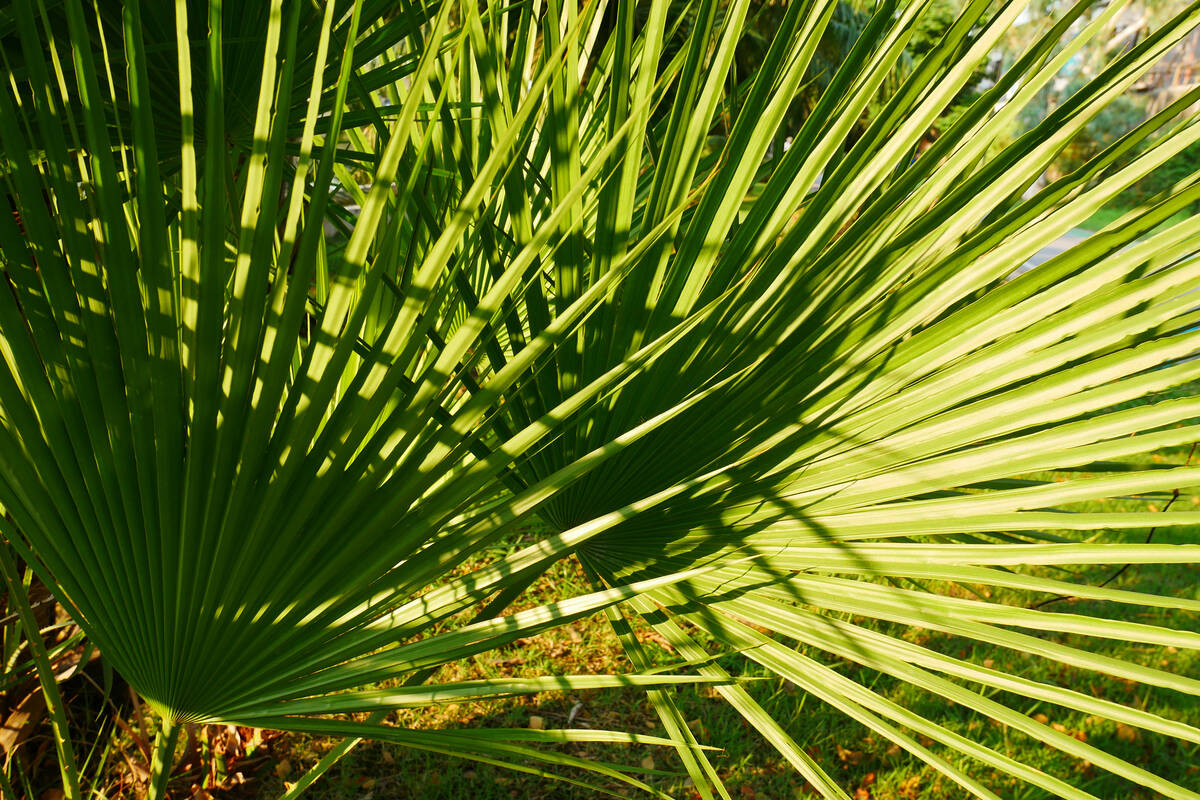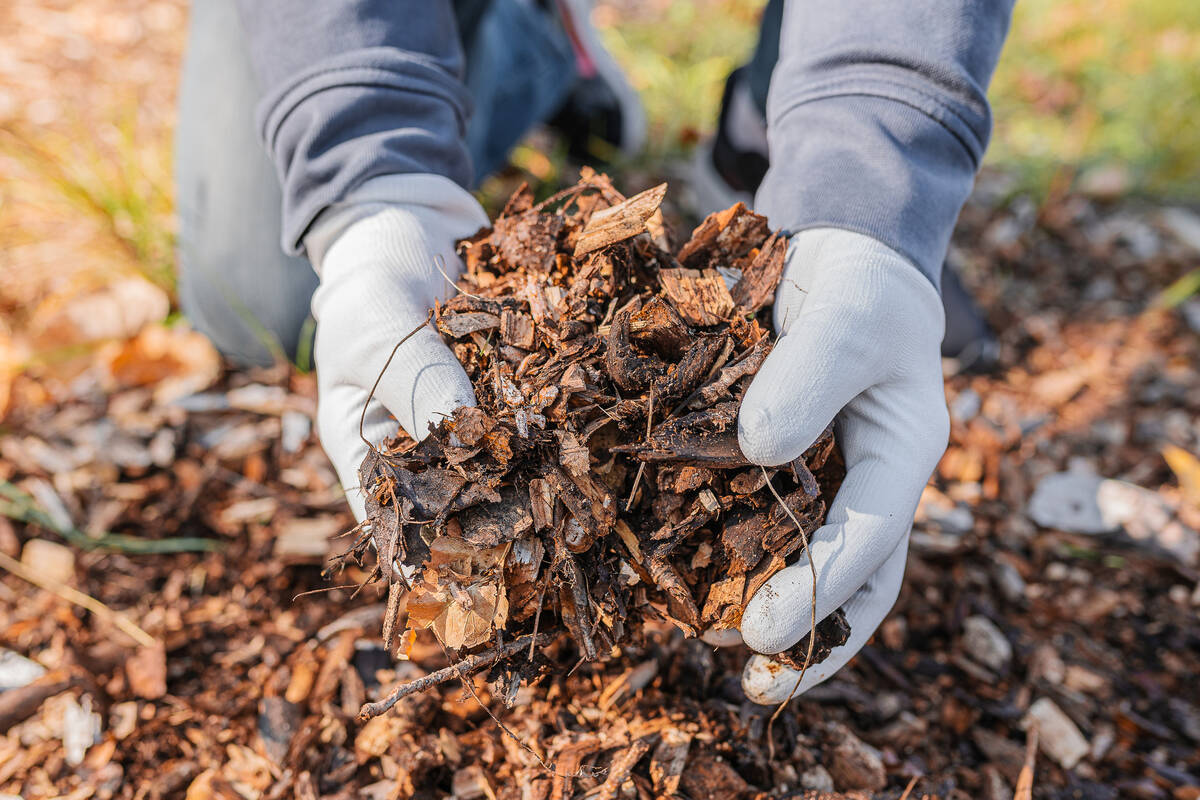Is transplanting large Mediterranean fan palm a good idea?
Q: Our neighbors are redoing their front yard landscaping, which includes removing a 17-year-old Mediterranean fan palm. They have offered it to us.
We do have a space that appears large enough for it in our backyard, but this new location would only receive direct sun in the morning, then it would be partially shaded by a sumac tree the balance of the afternoon. In its current location it gets direct sun all day, no shade at all.
Is a mature fan palm even viable to move in the first place? And would the lesser amount of direct sun be detrimental to its health?
A: I would guess that it is too old and too large to move on your own. The chance of losing it will be high even with a crew of four. Unless it is done right. What you have in your favor is that you would be moving it at the right time of year — fall.
Have it done by a professional. It’s heavy.
If this were a different tree, you could prune it back to compensate for its loss of roots, but that is difficult.
A fully grown Mediterranean fan palm is about 20 feet tall and 20 feet wide, unless it is pruned regularly to get rid of all the basal stems. You would need quite a large area to give it a home.
Q: I have difficulty growing food in this climate. I bought 15-gallon fruit trees and have a raised bed full of vegetables. I bought soil from Viragrow as you suggested on your blog. Can you tell me what I’m doing wrong?
A: In your pictures, I noticed a lack of mulch. I would add a surface mulch, about 2 inches deep. A mulch applied to the soil surface slows evaporation, and it helps cool the soil when temperatures are above 110 degrees. Just keep the mulch away from newly planted fruit trees for a few years.
If you use rock on the surface for mulch, rake it away about 3 feet in all directions until you see bare soil. Apply a thin layer of compost (half a cubic foot per tree). (Compost is not the same thing as mulch.) Water the compost into the soil and then rake back the rock mulch. Do this every year to keep plants vibrant and healthy.
If you are using wood chips as a surface mulch, there is no reason to rake the surface mulch back each year. Just add your favorite fruit tree fertilizer. Let the rotting wood chips add organics back to the soil slowly to enrich it.
Wood chips are nearly free at the Master Gardener orchard in North Las Vegas. Call 702-257-5555 to get the hours and days for the orchard. Just bring your own plastic bags or pickup truck to transport the wood chips.
You didn’t mention how often you water. Water the soil, not the fruit trees. Keep the soil moist but not wet unless it’s right after an irrigation. Water the soil around the roots of your fruit trees. The roots of your fruit trees are somewhere between 18 inches and 2 feet deep. Water the soil from top to bottom.
Q: I have a stem on one of the avocado pits that I am trying to root. They seem to do well when they are in water but not when I plant them. When I plant them, it seems to be the kiss of death. Can I grow them in water and not plant them? Do I add anything to the water? I ordered a large avocado jar.
A: Roots grown in water are different from roots that grow in the soil. Plus, I think your avocados were light starved. Any changes you make to your plants have to be gradual and when they are still small (a few inches tall).
I have not tried to grow avocados from the pit. But I have grown them outside in full sun, where they will thrive as long as it does not get too cold.
Make any moves to the outside while the plants are still small. Do it gradually over a period of several months. Remove one barrier first and then the next barrier after the small plant has had time to adjust.
I noticed your avocados were grown inside with a lack of full sunlight. Remedy that either by moving the light source closer to the leaves of the plant or increasing the number of hours — or both.
As soon as your plants are rooted in water, move them into a potting soil. Get them to grow soil roots. After they successfully grow their roots into a potting soil, move them to the outside when you first see new growth.
Move them into some shade outside. Consider putting them on the north side where there is no direct sunlight. Avoid any direct sunlight on them when it’s hot.
Change the water daily. It is important for their water to be fresh and full of air.
Q: I inherited a 40-foot-tall Joshua tree in my new home’s landscape. How should I care for this tree?
A: Taller desert plants, like your Joshua tree, should be watered deeply but not often. After the first year in the ground, water desert plants four or five times during the year: three times (four at the most) during the summer and only once or twice when it is cool or cold.
By deeply, I mean watering to about 2 feet deep. Water at least half the area under the Joshua tree’s canopy. Do that with either drip emitters spaced 18 inches apart or a well (moat) around the trunk. This method helps prevent blowover. It is better if the applied water is 100 percent beneath the canopy. If the area is flat, use a 2 inch high well around the tree and fill it.
Lastly, if the Joshua tree is on drip emitters, turn off the controller. Turn it on when water is needed and use these drip emitters to apply the water manually. Aim to water this established Joshua tree once every four to six weeks from about April through September.
Bob Morris is a horticulture expert and professor emeritus of UNLV. Visit his blog at xtremehorticulture.blogspot.com. Send questions to Extremehort@aol.com.























